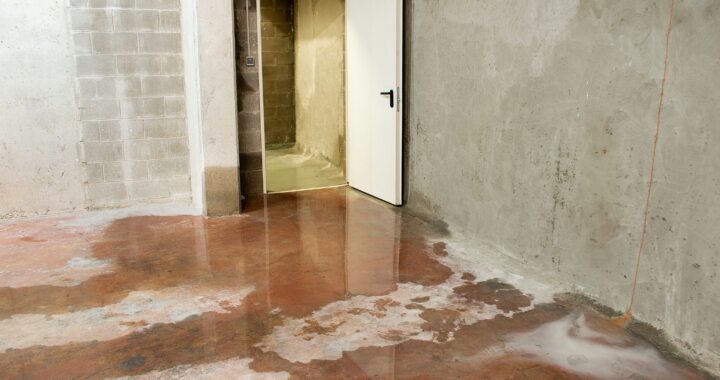Common DIY Mistakes and How to Avoid Them

Taking on DIY projects can be a fulfilling way to improve your home. It saves money, allows for personal expression, and gives you a sense of accomplishment. But DIY isn’t always as straightforward as it seems. Many enthusiastic amateurs find themselves in over their heads, facing costly and sometimes dangerous mistakes.
Here’s how you can avoid the most common DIY errors and achieve the best results.
Overestimating Your Abilities
It’s easy to be overly ambitious when you’re excited about a new project. However, biting off more than you can chew often leads to frustration, wasted resources, and poor results.
How to Avoid This:
- Start Small: Begin with simpler projects like painting a room or installing floating shelves. As your skills and confidence grow, you can tackle more complex tasks.
- Set Realistic Goals: Honestly assess your skill level. Avoid major structural changes or electrical work unless you have the necessary experience.
- Plan Thoroughly: Break your project down into manageable steps. Create a detailed plan and schedule to keep yourself on track.
Incorrect Measurements
Accurate measurements are crucial for any DIY project. Incorrect measurements can lead to wasted materials and time, turning your project into a disaster.
How to Avoid This:
- Double-Check Numbers: Always measure twice before making any cuts. This simple step can save you from costly mistakes.
- Use Quality Tools: Invest in reliable measuring tools. An inaccurate tape measure or leveling tool can throw off your entire project.
- Consider Blade Width: When cutting, remember that the width of the blade takes material away. Cut slightly short of your final measurement to account for this.
Example: When installing kitchen cabinets, double-checking your measurements can prevent gaps and ensure everything fits perfectly.
Using the Wrong Tools
Using incorrect or inadequate tools can damage materials, compromise the quality of your work, and even result in injuries.
How to Avoid This:
- Research: Identify the tools required for your project before you start. Watched tutorials and read guides to understand their proper use.
- Rent or Borrow: If you lack specialty tools, consider renting or borrowing them. Hardware stores often have rental services for high-quality, specialized tools.
- Maintain Your Tools: Ensure all tools are in good working condition. Sharp blades and clean, well-maintained equipment ensure better results.
Example: For cutting tiles, use a proper tile cutter instead of improvising with a saw. This ensures clean, precise cuts without damaging the material.
Ignoring Safety Precautions
Safety should be your top priority in any DIY project. Overlooking safety can lead to serious injuries and derail your progress.
How to Avoid This:
- Protective Gear: Always wear appropriate safety gear such as goggles, gloves, and masks. This protects you from common hazards.
- Read Manuals: Familiarize yourself with tool manuals and safety guidelines. This step ensures you understand the correct and safe operation of your tools.
- Prepare Your Workspace: Keep your work area clean and free of clutter. Use warning signs to designate hazardous zones and keep a first aid kit nearby.
Example: When using power tools, never disable safety guards. Wearing goggles can save your eyes from flying debris during cutting or sanding.
Skipping Necessary Permits
Skipping required permits can lead to significant issues down the line, including fines, stop-work orders, or having to redo projects that don’t meet local codes.
How to Avoid This:
- Check Local Requirements: Before starting any project, check with your local building department to see if you need permits.
- Schedule Inspections: Ensure that you schedule required inspections during your project timeline. This step verifies that your work meets all local codes and regulations.
- Keep Records: Keep copies of approved permits on-site during the work to avoid any compliance issues.
Example: Projects like electrical work, plumbing modifications, and structural changes often need permits. Failing to obtain them can result in needing to redo the work, incurring additional costs.
Conclusion
Tackling DIY projects can be incredibly rewarding, but it’s essential to avoid common pitfalls to ensure success. By starting small, double-checking measurements, using the right tools, adhering to safety protocols, and obtaining necessary permits, you can complete your projects smoothly and efficiently. Whether you’re installing custom hand rails or taking on a more straightforward task, these tips will help you navigate your DIY endeavors with confidence and skill.
Embrace your projects with careful planning and preparation, and turn your DIY dreams into reality without the headaches.



 The Link Between Water Damage and Mold Growth
The Link Between Water Damage and Mold Growth  Innovations in Shut-Off Valve Technology: What’s New?
Innovations in Shut-Off Valve Technology: What’s New?  How to Make a Stylish Gaming Area at Home in 2025
How to Make a Stylish Gaming Area at Home in 2025